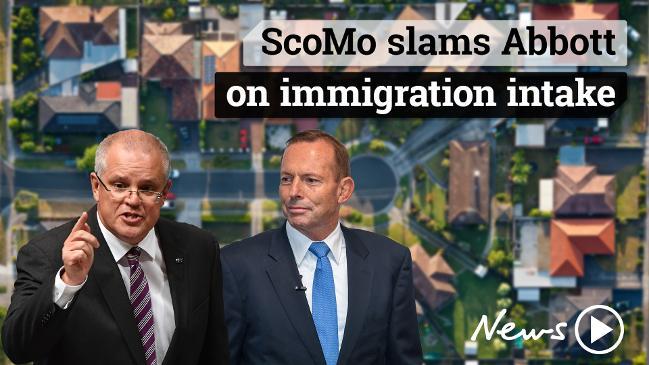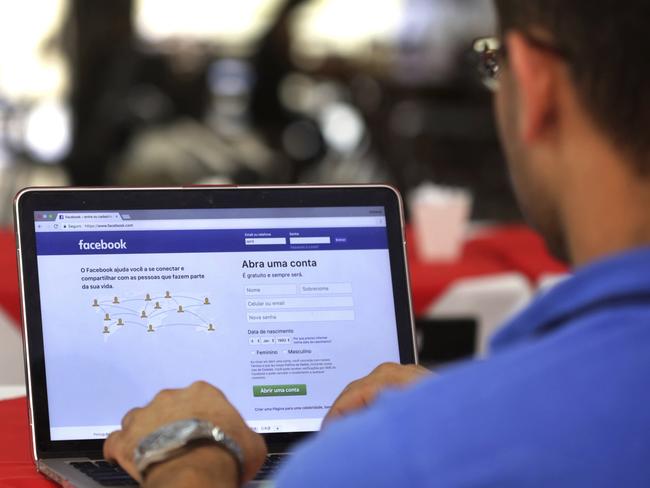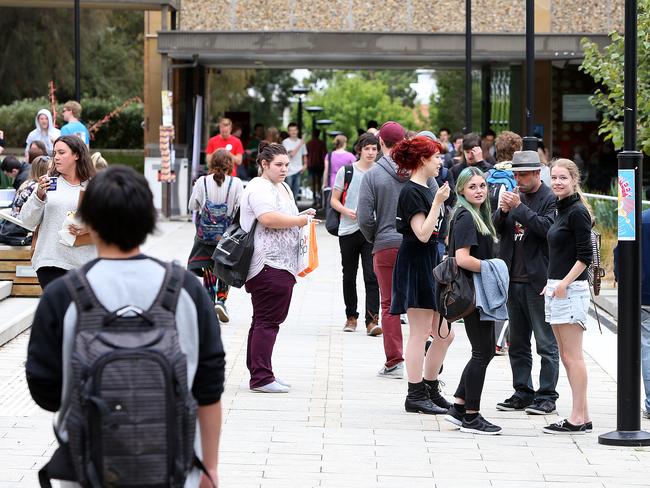Is immigration too high in Australia?
THE former prime minister is copping a lot of flak for his latest comments, including from his own colleagues. But one expert said he made a lot of sense.

CUTTING immigration into Australia may improve living standards and housing affordability for residents but there are also trade-offs that need to be considered.
Former prime minister Tony Abbott has called for Australia to drastically reduce immigration levels from 190,000 to 110,000 people a year.
“My issue is not immigration; it’s the rate of immigration at a time of stagnant wages, clogged infrastructure, soaring house prices and, in Melbourne at least, ethnic gangs that are testing the resolve of police,” he said during a speech at the Sydney Institute on Tuesday evening.
“It’s a basic law of economics that increasing the supply of labour depresses wages; and that increasing demand for housing boosts price.”
Mr Abbott has come under fire but could he actually be right?
THE ARGUMENT FOR LOWER IMMIGRATION
Population expert Bob Birrell, a former Monash University professor and now head of the Australian Population Research Institute, said net overseas migration was responsible for half the growth in households in Melbourne and Sydney.
“Therefore it’s a major factor in demand for housing in those two cities and a major contributor to price rises as a consequence,” Mr Birrell told news.com.au.
“If there’s going to be any solution to metropolitan problems (housing affordability, pressure on infrastructure, cost of living increases), the immigration program has to be cut drastically.”
However, net overseas migration includes everyone coming in or out of Australia annually, whether they are citizens or migrants.
Treasurer Scott Morrison said today it was temporary migration driving population growth up, so the government had tightened controls on 457 visas and extended the waiting list time for migrants to be able to claim welfare.
But Mr Birrell said he thought dramatic cuts could still be made to the skilled migration program.
While a high immigration rate may have made sense in the past — to help bring workers in during the mining boom — Mr Birrell said many migrants were not filling skills shortages anymore.
According to 2015-16 statistics, almost 130,000 people enter Australia every year under the “skills stream”, a substantial number of the total 190,000 granted permanent visas. Most of the other places are granted under the “family stream”.
“That could be slashed because the so-called skilled migrants it is attracting — very few have skills that are in short supply in Australia,” Mr Birrell said.
“Employers would hardly notice the difference if the skills stream was slashed.”
In a report published in December 2016, Mr Birrell highlighted rorting of the previous 457 visa system (which has now been replaced) among three popular occupations: IT professionals, engineers and accountants.
“Recent Australian graduates in each of these major professions identified are struggling to find professional work,” Mr Birrell said in the report.
“Competition from the migrant influx is part of the problem.”

But Mr Birrell said changes announced in April last year to abolish the 457 visa and replace it with a new Temporary Skills Shortage (TSS) visa was a significant reform.
Unlike the 457 visa, the two-year TSS will not allow migrants to apply for permanent residency once they expire. The government also slashed the number of occupations eligible to apply for the visa.
“All those reforms were justified and represented quite a change in Coalition Government immigration policy,” Mr Birrell said.
“Prior to April 2017, the Coalition priority had been to open up the temporary and permanent entry programs so this is a big change.”
WHY CUTTING COULD HURT
Treasurer Scott Morrison has come out swinging against Mr Abbott’s suggestion, saying that drastically cutting Australia’s migration intake would cost the federal budget up to $5 billion.
This potential impact on economic growth is one of the main factors keeping immigration high, Mr Birrell said.
“A great point of pride in Australia is our 26 years of unbroken economic growth, and by economic growth, they are referring to overall GDP (gross domestic product) growth,” he said.
“Government does not want to lose that growth figure and it’s also crucial to tax revenue.
“Extra people consuming things is a major driver to gross domestic product.”
Basically, if population is growing, so are the number of houses and other products required to cater to the extra people. This is good for business, who can make more products.
Mr Birrell said the Coalition, like the Labor Party, had been anxious to maintain overall economic growth and reducing population growth would slow this down.
But he also noted that while “nominal economic growth” would slow, “per capita economic growth” wouldn’t.
“This is what really matters to Australian residents,” he said.
“The benefits would mainly be reducing pressure on the big cities — so it’s a trade-off.”
Another trade-off would be the hit to Australia’s university sector.
“The main industry affected by this would be the overseas student industry because it would diminish the attractiveness for students to enrol at Australian universities, since many only do so in the hope of using the qualification to get permanent residency,” Mr Birrell said.

REFUGEES ARE ‘NON-NEGOTIABLE’
While Mr Abbott has also raised issues with migrants not speaking English and “ethnic gangs” in Melbourne, Mr Morrison said he disagreed with the proposition that immigrants caused crime, saying statistics showed they were less likely to be unemployed and their children did better educationally than the general population.
Mr Birrell also notes Australia’s intake of refugees is “non-negotiable”.
“The humanitarian program is based on Australia’s obligation to do its bit for the international refugee situation,” he said.
Currently about 17,555 refugees settle in Australia every year, and this is on top of the 190,000 granted permanent visas.
“It’s an obligation that can’t really be changed, it’s a non-negotiable part of the immigration program,” he said.



